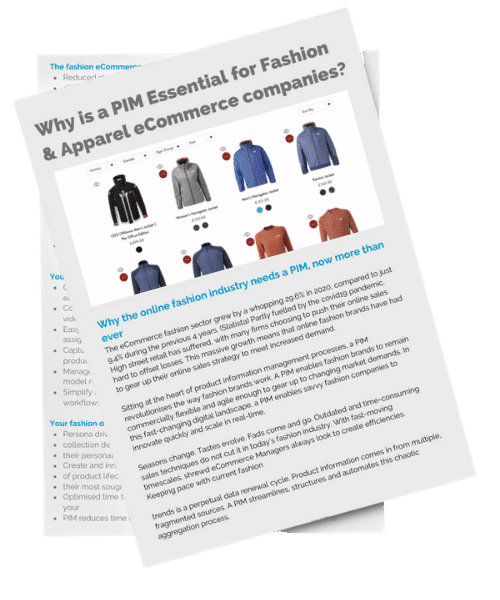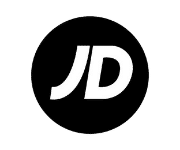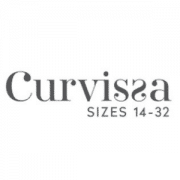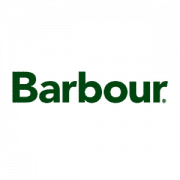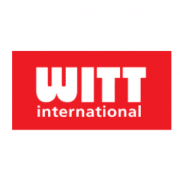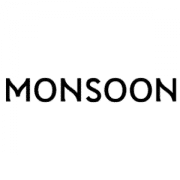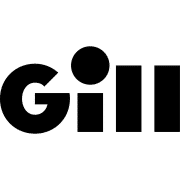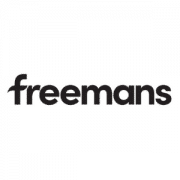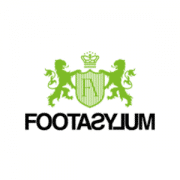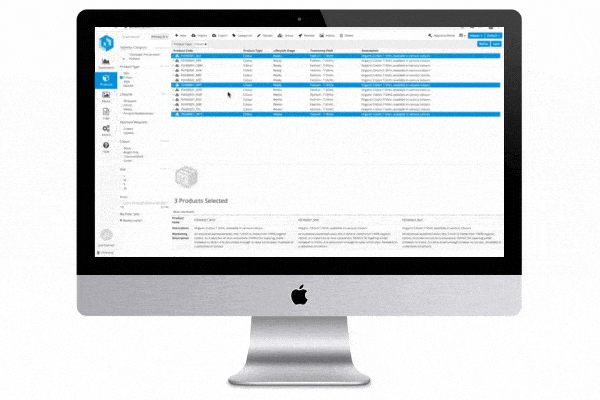Why the online fashion industry needs a PIM, now more than ever
The eCommerce fashion sector grew by a whopping 29.6% in 2020, compared to just 9.4% during the previous 4 years. (Statista) Partly fuelled by the covid19 pandemic. High street retail has suffered, with many firms choosing to push their online sales hard to offset losses. This massive growth means that online fashion brands have had to gear up their online sales strategy to meet increased demand.
Sitting at the heart of product information management processes, a PIM revolutionizes the way fashion brands work. A PIM enables fashion brands to remain commercially flexible and agile enough to gear up to changing market demands. In this fast-changing digital landscape, a PIM enables savvy fashion companies to innovate quickly and scale in real-time.
Seasons change. Tastes evolve. Fads come and go. Outdated and time-consuming sales techniques do not cut it in today’s fashion industry. With fast-moving timescales, shrewd eCommerce Managers always look to create efficiencies.
Keeping pace with current fashion trends is a perpetual data renewal cycle. Product information comes in from multiple, fragmented sources. A PIM streamlines, structures and automates this chaotic aggregation process.
Growth drivers in fashion
When we evaluate growth enablers for eCommerce fashion, it is important to understand the main growth drivers in our ultra-competitive sector.
Our research shows these to be:
- Time to market optimization
- Creating an immersive and polished buyer experience
- Our ability to reach customers on multiple channels/devices (omnichannel)
- Buying persona centric clothing design
- Agile and responsive marketing campaigns
- Artificial Intelligence (AI) based data analytics used to drive a hyper-personalized buying experience and cross-sells
- Visually enticing and complete product listings that are easy to search
- Diffusing products on various marketplaces
- Our international reach
How we can influence the main KPIs within online fashion?
Before we dive into how a PIM benefits online fashion sales, let’s also take a look at the main KPIs in online fashion and how we can influence them.
| KPI |
How to impact this metric |
| Shopping cart abandonment rate |
· Engaging, personalized product listings
· Enticing photography and video
· Accurate and complete product listings
· UX – Ensure a seamless website user journey
· Reliable website navigation, search function, and seamless product filtering
· Quick and easy checkout process with free shipping if possible |
| Conversion rate |
· Use AI-driven data to deeply understand and gear up for the latest fashion trends
· Resonate with your audience segment and personalize your products to them at the design stage
· Compelling and personalized sales messages
· Hyper personalized buying experience
· Serve up garments that match what your customer searched for
· Engage your audience with your brand during your buying process
· Use AI analysis to spot trends in buying behavioral data
· Use website analytics software to check your user journey for dead ends, broken links and optimize performance |
| Cost of customer acquisition |
· Efficient marketing strategy
· Fully leverage your omnichannel strategy to attract customers from multiple platforms
· Extend your marketing reach with marketplaces
· Use conversion rate optimization (CRO) techniques to boost your product pages’ conversion rates
· Deeply understand your cost per lead (CPL)
· Test low-cost lead generation platforms and methods |
| Customer lifetime value |
· Use AI analysis to deeply understand your audience and design products they love
· Ensure brand loyalty by engaging your customers on multiple channels each time new collections are launched
· Launch new products on time to enable your marketing team to promote them regularly to all segments
· Use regular soft-touch omnichannel marketing campaigns
· Keep an open dialogue with your customers and your brand |
| Average order value |
· Use AI-driven software to fully understand your buyers, spot patterns, and predict buying behavior
· Use AI data analysis to create hyper-personalized product matching and upsell suggestions
· Leverage your PIM data to accurately cross-match products based on search history
· Use product bundling techniques like, “shop the look” “you might like” “have you forgotten” functions |
| Gross profit margin |
· Automate the main parts of the eCommerce role (product information management) to reduce your costs and grow without hiring more people
· Your PIM automates stock management to create efficiencies
· Your PIM enables you to launch new collections on time so you can sell them at full price for the maximum number of days possible per season
· Ensure that entire your operation is efficient enough to respond quickly to market demands |
Who can benefit from a PIM?
The fashion eCommerce director
- Reduced chaos – Manually processing huge amounts of product data from different sources is overwhelming and stressful
- Automate – Use workflows to automate key product management tasks, saving time and money
- Easier to manage – Your PIM becomes your collaboration hub. Storing all actions and workflows in one centralized location improves communication and productivity. No more scattered e-mail trails and disparate spreadsheets
- Collaboration on speed – Having one central management system enables multiple roles, departments, and locations to work together seamlessly to product completion
- Increased efficiency – Make your department much more efficient without simply hiring more people. Streamlined productivity software is the answer to creating efficiency and automating error-prone, repetitive admin tasks
- Increased accuracy – Reducing errors reduces your return rate, increasing online sales
- Reduced costs – Your PIM automates admin tasks, reducing your department’s running costs, improving your profit margins
Your photographer/graphic designer
- Categorize – The Digital Asset Management (DAM) part of your PIM enables you to easily label images and video and categorize them against thousands of SKUs
- Collaborate – Create a centrally shared, collaborative repository of all images, videos, creative and digital assets for all your products
- Easy image signoff – This becomes much easier with workflows allowing you to assign tasks to people and manage them through
- Capture fabric swatches – Tag them and automatically add them to the right products at the touch of a button
- Manage models – Assign the correct model to each product image, including model name, measurements, and personal details
- Simplify image rights & licenses – Easily assign creative rights to your images, using workflows
Your fashion designers
- Persona driven design – With AI-driven data from your PIM, your product collection designers intimately know your audience, designing products with their personal taste, buying behaviors, and emotions at heart
- Create and innovate – With your PIM eliminating the traditional complexities of product lifecycle management, your designers are free to innovate and design their most sought after collections
- Optimized time to market – By simplifying product lifecycle management, (PLM) your PIM reduces time to market, enabling you to launch more products on time
Your eCommerce admin team
- Automate your processes – Automate product data sourcing, import, promotions, and pricing – Speed up product launches across all channels
- High volumes – Use bulk actions to easily manage sales, promotions and discounts. Edit vast quantities of product data in one click. Archive your entire collection on multiple marketplaces at the touch of a button
- Automate product enrichment, tagging & product text writing – AI algorithms can use datasets to automatically write your product descriptions and “grab” product tags with no human intervention needed
- Reach new markets – Automated distribution across multiple marketplaces. Click a button to publish to marketplaces like Amazon, eBay, and Google shopping
- Request information – Setup automated information requests from your suppliers, designers, or your team. Automate your signoff process too
- Tame your digital assets – Track and manipulate huge quantities of digital media assets accurately
- Translation – Automate your language translation process
Your marketing team
- Improve conversion rates – Using a PIM improves your conversion rates by up to 56% (A T Kearney)
- Data-driven decisions – AI-driven data insights improve your website conversion rates
- Personalize – AI-driven data creates highly personalized product descriptions
- Boost profit margins – Prepare tailored marketing campaigns to be used at the right time to sell full-priced products
- Increase volume – Prepare product campaigns in bulk, speeding up your audience outreach
- Hyper personalized – Enhance your buying experience
- Easily produce both printed and catalogs – Filter your collections to share SKUs, rich media, and detailed information with your graphic designer or printer at the touch of a button. Ensure the stress-free, timely launch of your seasonal launch catalogs
- Control your brand integrity – Control your listings on all channels and marketplaces to maintain a recognisable brand voice and unified vocabulary. Always tell your brand story correctly
Customer support, warehousing & product fulfillment
- Accurate SKUs – Detailed product listings and error-free SKUs boost order picking and packing accuracy
- Product images – Help to pick items when you have multiple similar products
- Product info – Your customer support team can access up-to-date, complete product information. Customer service improves when your customers immediately receive the answer they require. They build a warm rapport with your loyal customers
Let’s talk about you…
The typical personality of leaders in fashion eCommerce
Our expert team work with eCommerce leaders in many industry sectors. We notice many key differences between eCommerce people in fashion and other industries. In our view, if the eCommerce world was the army, fashion brand managers would be the Marines.
See how you relate to this…
In our experience:
| eCommerce Managers in the fashion industry |
Why is this the case? |
| eCommerce people in the fashion industry tend to be more commercial and more top line-oriented than their counterparts in other industries |
Their eCommerce roles are much more fundamental to the overall success of the business |
| Businesses in the fashion industry invest their time, effort, and hiring budget to recruit the best eCommerce talent they can find |
They recognize that a successful eCommerce strategy is paramount to the success of a fashion-based business |
| They tend to be straight-talking communicators. They get straight to the point |
Flowery communication is a luxury. With much more rapid time-to-market cycles, fashion eCommerce Managers tend to focus their efforts on productive tasks. They are more economical with their time than other industries |
| They tend to be decisive |
Being short on time, they avoid pontification and procrastination. They tend to rely on well-analyzed data and behavioral trends to make business decisions |
| They value their eCommerce tech stack and understand the importance of driving the adoption of their digital tools |
They know how much a highly personalized, immersive buying experience impacts their core KPIs. They see their PIM as just as important as their ERP system |
| They realise that their success is tied to their buying experience |
They invest heavily in personalizing their buying experience. They use data to get to know their target audience intimately and engage them. Our clothes are a deeply personal choice and a reflection of who we are. They are a highly emotional purchase. Emotional-based buying decisions benefit massively from a highly personalized buying experience. This can only be achieved with a PIM to serve up highly personalized product attributes, content, and storytelling. |
| eCommerce Managers in the fashion industry have much more influence over their company’s growth strategy than other industries |
Business owners understand that the decisions made by their eCommerce Managers have a huge impact on their growth. |
| They tend to be dynamic people with compelling business drivers |
They exist in a world of short times to market and seasonal deadlines. They know that investing in a PIM is not a question of “if” it is a question of when for them |
| They understand the value of good ROI |
eCommerce people in fashion and apparel can test their own customer data to see really quickly whether a PIM will have a positive or negative impact on their level of sales. They typically know within 2 weeks of launch that their PIM boosts their ROI significantly. |
Heart over head – How fashion buyers shop
Studies show that consumers mostly evaluate fashion purchases based on emotions (personal feelings and responses and perception) rather than information (brand information, features and logic). Emotionally connected buyers are 52% more valuable to a brand (Fashion and Textiles). Positive emotions influence buying decisions much more than the item’s details and facts. Every detail must be crafted to seduce your customers. A growing number of online retailers are also using sensory marketing to engage the senses of the buyer to underpin the buying experience.
Product listings need to create an emotional connection with your buyers. This emotional connection deepens your relationship to foster impulsive and repeat purchases. Research shows that without an emotional connection to your products, customers abandon their purchase. This affects high-priced fashion items disproportionately.
| Typical Characteristics of a Fashion Purchase |
| Made on impulse |
| Made individually |
| Quick buying process |
| Products may not be compared with others |
| Emotional purchase |
| Purchases are based on looks or cosmetic features |
| Buyers may use online marketplaces or their favorite online merchants |
| Products are purchased based on likes and dislikes |
| Buyers tend to prefer trusted brands |
| Buyers simply check out online |
| Buyers purchase according to their personal preference |
The importance of a flawless buying experience
At just 2.86%. (invespcro.com) the average global eCommerce conversion rate is pretty low. A clunky and disjointed buying experience tanks your conversion rate. Having encountered a poor shopping experience many customers make a firm decision to never use that store again. Customers will shop with one online retailer over another simply because the shopping experience was easier and better.
We already know that fashion buyers are typically:
- Shopping on their mobile
- Browsing in their hard-won leisure time
- Low on patience, fickle and impulsive
- Not always highly motivated buyers
- Motivated by their emotions
Shoppers spend just 161 seconds on mobile vs 235 seconds on desktop. (Fourthsource) Fashion retailers have to work extra hard to keep their customer’s short attention spans engaged in their buying process.
64% of people say their buying experience is more important than price when making a purchase. (Gartner)
A website that’s difficult to use grates on you, making you abandon your cart and bounce off.
Your PIM system actively reduces your bounce rate by adding the right navigational tags and settings to your products. This information is easily configured via your user-friendly visual interface. These settings pull through to your website navigation with search engine meta tags. Your PIM makes your website navigation easy, smooth, and naturally logical. This underpins your user experience and turns those first split seconds on your website into sales.
61% of organizations that invest in a PIM do so to improve their customer experience. (Ventana Research)
How does eCommerce in the fashion industry differ from other industries?
Huge volume of Product Data and High Product Churn
Your fashion brand needs to be as flexible as the seasons and evolving trends that come and go. As the seasons change, new collections come in thick and fast. Some retailers only retain 20% of their stock between seasons. 80% stock rotation within such short-selling windows is huge. With product information coming in from disparate sources it can feel truly overwhelming to keep pace with new information on your website. You have new product descriptions to create, photos to add, SEO descriptions. This ties up your team and delays diffusion deadlines. Without the structure of a PIM, this perpetual renewal cycle is chaotic and exhausting.
The ever-expanding product categorizations in fashion
Installing Magento (or any other eCommerce platform) to a website is enough to completely blow the mind of an average web designer. All the options and configurations available, are insane. Inventory, delivery, discounts, geographies, product relationships, etc, etc, etc…eCommerce is a complex and technical area of website development. The learning curve is intense. People at the top of their game in this field are experts. Now add to this the additional complexity of a fashion business.
Typical fashion search parameters include:
Person – Men, women, child, girl, boy
Sizing – Age, size, measurement
Type of garment – Skirt, shirt, dress, tunic, shorts
Style – Cap sleeves, maxi, mini, A-line, asymmetrical
Neckline – Sweetheart, round, V neck
Length – Trousers, skirts, sleeves, dresses, etc.
Colour – Often using AI-based color palette search filter
Pattern – Bohemian, floral, geometric
Usage – Rugged, rain, arctic conditions, marine, outdoor
Sports – Skiing, fishing, ice, sailing, dog walking
Fabric – Wool, cotton, poly, etc.
Region – Europe, America, Asia
Season – Winter, Summer, Autumn, Spring, and mid-season
Designer – Ted Baker, Armani, Calvin Klein
Brand – Superdry, Monsoon, Nike
Event – Formal, casual, loungewear
Accessories – “shop the look”, matching items or sets
Ethical – Fairtrade, organic fabric, vegan friendly
Delivery info – Next day, free delivery, my country
Add to this the other product attribution tags that need to be stored and potentially searchable. Fabric provenance, supplier info, care labels. This is in addition to specialist clothing brands like sports, outdoor, hobbies and competition wear.
The variety and complexity of product attributions and how they relate to each other means that managing product information in the fashion world without a PIM is impossible. Using spreadsheets and ERP systems with rigid functionality becomes cumbersome and limits your commercial agility. It’s like trying to navigate white water rapids in an ocean liner. Impossible! Whereas a PIM stores everything centrally and efficiently. This gives you the agility to move quickly and respond to market trends with the click of a button.
Slight (but vital) product variations
Often, online fashion teams manage thousands of products that vary by just 1 small detail. It may be the same shirt, but with several colour, sizing or style options.
Being based on the same base product, most of the product information doesn’t change — like product names, descriptions, laundry guide, and price.
The sheer volume of slightly variable products can cause a nightmare of confusion for eCommerce Managers. A PIM keeps track of all these options, automating product codes and making it easier to accurately pick and pack similar items.
Fashion aesthetics must be visually pleasing
Think of the glamour and flair of a fashion show catwalk. Fashion is a love affair with the eyes. The way a garment speaks to a person is really personal. Our eyes drink in the cut, design and colours. Impeccable visuals resonate with our preferences and individual style before we buy. Your product listings need tantalizing HD photos with zoom, positive ratings, storytelling, and personal calls to action.
High-quality images are much more important to evaluate a product than descriptions and reviews. The management of vast quantities of rapidly changing digital images can only be successfully achieved with a Digital Asset Management (DAM) tool. This is included with most PIM software. Your DAM enables you to streamline and control your digital assets, seamlessly uploading and managing them. Your PIM is the foundation of an immersive product experience that increases online sales.
Data analytics on another level
Compared with bricks-and-mortar shops, online shopping gives you real-time instant customer data and feedback. Much of this is from customers you can identify. You may know who your customer is a 32-year-old lady, what she added to her basket, has she checked out yet, how long did she stay on your site, etc. By becoming more intimate with our customers’ fashion brands can write tailored product descriptions that are specific to each buyer.
Savvy Digital Fashion Directors analyze rich buyer data to influence their future sales strategy. Add in a layer of Business Intelligence (BI) analysis and you can use behavioural traits to personalise your shopping experience to increase online sales. Suggesting hyper-relevant cross-sells and bundle sales for example. While this level of data science might sound complicated, your PIM achieves this at the touch of a button.
Hyper personalisation
31% of consumers wish their shopping experiences were more personalised than they currently are. – (Infosys)
AI technology uses transactional and behavioral data to predict what someone might like before they buy it. This delivers a richer, more engaging shopping experience. This personalisation can also be based on their age, gender, location, interests, etc.
Hyper-targeted messages and images that cater to specific interests and demographics are presented against that product. For example, offering a recycled cotton shirt to an environmentally conscious customer. To successfully provide this immersive, personalised product messaging requires your online sales platform to be able to store multiple versions of relevant product descriptions and images. While this greatly improves your product’s conversion rates, it also increases the amount of product data you need to store, manage, optimize and publish. Hyper personalization requires a reliable and well configured PIM system to underpin excellent product positioning.
The many ways in which a PIM benefits your business
“Zero in” – to capture sales more quickly
Customers want a vast product range at their disposal. Savvy online shoppers need to be able to zero in on what they want quickly. They don’t want to have to look through hundreds of options when they actually hate cropped trousers or 80% of the styles are not available in their size. They want to use an intelligent, (or “fuzzy”) powerful search function to be able to filter and choose. They want to personalize their options to their exact buying objectives. With technical innovations, these product attributes are becoming more subjective and personal. Attributes are beginning to be matched by AI-driven, hyper-personalized shopper data. This approach creates a tailored and emotional buying experience.
Categorizing all this product data makes your product inventory work much harder to capture sales. The accurate data processing needed to achieve this level of product management requires the capabilities of a PIM.
Game-changing product attribution is essential for fashion companies
Your fashion business is not just impacted by the number of product SKUs you manage. It’s also the complexity and taxonomy of your product information.
- With many products fitting in one or more category, how do you structure and categorize them?
- What is their hierarchical relationship?
- How do you associate related products together to increase your AOV? (accessories, upsells, cross-sells, “if you like this…”)
Your PIM handles all of this, quickly and simply.
Use product attribution tags to capitalize on trending search terms
Lifestyle product attributes such as vegan-friendly clothing and environmentally manufactured fabric are now front and center. Green fashion clothing choices are more limited, so buyer intent is higher in these segments and they are less price-sensitive.
So-called “cause branding” enables your consumers to shop with emotionally conscious goals in mind – The flexibility and product-focused approach of your PIM enable you to attach more intangible attributes to your products. There is a growing trend for marketers to capitalize on the “warm glow” effect. This is the feeling that people get when they help someone else or purchase conscientiously with others in mind. Examples of these could be whether a product’s fabric is organically manufactured, fair trade, traceable, sustainable, environmental, and ethical.
Outlist your competitors
When consumers shop around, they may compare two similar or even identical products. They may want to really drill down on product details and answer their burning buying queries before they hit “buy now”. Adequate and mediocre product descriptions that are average or as good as your competitors will not give you the competitive edge in a side-by-side product comparison war.
Your product listings must differentiate from your competitors. You need accurate and consistent, products with masses of enrichment and potentially language translation. Listings are checked and optimized before being diffused into your distribution channels.
To stand out, you have to better your competitor’s product listings:
- Rich and descriptive product storytelling bring garments to life
- Stunning high-definition images with rich alt text, zoom, and views from different angles
- Hyper-personalized buying experience
- Product videos – Maybe catwalk videos or offering different views of the garment
- Influencer marketing or celebrity endorsements
- The highly successful lookbook or “shop the look” cross-sell strategy
- Garment styling and accessories
- The provenance and ethics behind your material sourcing
- Educational “how-to” guides
- Detailed brand information
- Buyer reviews
All of the above creative product strategies rely on a PIM to deliver successfully.
Omnichannel – “Savvy” fashion consumers are everywhere, on everything
The power of today’s online fashion is with consumers. They control what, where, and how they buy. Successful fashion brands are both style-conscious and tech-savvy. The online fashion world is currently embracing digital transformation on an unprecedented scale. (Imagine online shoppers using their webcam to model sunglasses on a virtual reality mirror of themselves). High street stores are quickly pivoting to technology-based channels like social and voice search. Our consumers expect diversity. They want to access our products on multiple platforms on any device, including mobile and tablet. They want a familiar shopping experience. They prefer to shop in their own favorite marketplace. There has never been a more compelling imperative for fashion brands to adopt these trending technologies and remain responsive to consumer behaviors.
A successful omnichannel strategy means that each buying experience needs to be relevant to every digital channel. Details are adapted to resonate with each customer interacting with your business via those channels. Clever technology built into your PIM enables you to deliver heavily tailored, contextually relevant product information for each channel.
Leverage marketplaces at the touch of a button
Very few fashion retailers sell via their own website alone. A website-only approach is very self-limiting to our audience and reach. Savvy apparel brands identify all their marketplaces and plug into them. They understand that their consumers want to buy from their own preferred marketplace. Amazon/eBay etc. They reach their customers wherever they choose to shop. A PIM enables them to control all products and descriptions on all platforms at the touch of a button.
Drawing them into the honeypot
Your PIM enables you to match the right products to the right people. Social media platforms enable you to micro-match buyer interests to key product listings. The whole process becomes personal. They had no intention of buying. The person scrolling was not looking for anything, they certainly hadn’t searched, but like a magpie, they spot something shiny and enticing. Because you use a PIM, your product listings are on point, your images are high definition and super baited. Using social media as a sales platform enables you to unfurl the tendrils of your marketing reach into unchartered waters. You reach much further gaining disruptive sales you would not have capitalized on using any other platform.
Social network integrations enable our consumers to shop directly on Instagram, Pinterest, and Facebook. Instagram checkout enables your customers to purchase directly within the platform without even transferring to an online shop.
Your PIM enables you to rapidly integrate these platforms, using data analytics to get them performing super-fast. With everything stored in one single place, PIM software enables you to quickly launch a Facebook, Pinterest, or Instagram store.
Capitalize on highly motivated buyer intent
According to Shopify, customers are 1.8 times more likely to buy a product they searched for. This means that all products should be easily discoverable for people who search for them. However, not all customers have the same names and expressions for things. Your PIM enables you to tag your products with alternative descriptive words, names, and terms that are commonly used, ensuring that they come up in a fuzzy search.
Your PIM also ensures that the correct product is served for a particular search word. For example, if they search for black leggings, they see pictures of black leggings. Inaccurate results irk and alienate our buyers. Precise product information is critical for a sleek and compelling shopping experience.
Reach more eyeballs with amazing SEO
Keywords, meta tags, and product descriptions are automatically stored by your PIM in a logical website hierarchy that search engines love. Your products are served up in searches more often. Your PIM enables you to gain more impressions, more often.
Your PIM makes API management and administration a breeze!
The level of interoperability needed between shopping channels, devices, third-party applications, and customer touchpoints is insane. Keeping track of it all can be challenging. Most of the interoperability is achieved through clever APIs. Setting them up, checking they are functioning correctly and managing platform software changes can become a technically challenging and unwieldy task.
APIs enable fashion brands to seamlessly create new digital experiences on diverse touchpoints – for example, Buy Online, Pickup In-store, (BOPI) endless aisle, and mobile POS. The fluid convergence of multiple technologies empowers you to harness more sophisticated sales techniques. This helps you smash your online sales target. Your PIM manages your APIs seamlessly taking your technical integration challenges away.
Seasonal sales events and pop-up campaigns – Your PIM enables you to be more responsive
Investing in a PIM enables fashion retailers to take a much more agile approach to sales preparation.
Black Friday sales, for example:
- All sale preparations can be done beforehand, avoiding a time squeeze and pressured deadlines
- Product descriptions are written and images pre-prepared
- Sale pricing is pre-assigned
You can assign all of this to a specific discount/sales campaign within a specified date range. To push your sales campaign live simply flip specific campaigns live. Your PIM automatically flips them back to normal pricing when your specified date ranges expire. You can also control specific discount codes and promotions in this way. This reduces the number of pricing errors within sales, reducing unnecessary admin and retaining your hard-earned profit margins.
Automation of excess stock management
A decent PIM solution enables you to automate your excess stock management. It gives you the ability to push excess stocks onto separate sales channels like eBay at the touch of a button.
You can even set stock criteria. For example:
| Potential Criteria…
|
Potential Action |
| If your stock is on sale for more than 100 days |
Automatically discount by 20% |
| If we exceed stock levels of 40 |
Automatically push surplus items onto eBay |
Minimize profit-eating SLOBs! – (Slow Moving and Obsolete items)
Even with an amazing ERP system, stock management can become a huge and unwieldy job. SLOBs and poor stock management can bleed the profits out of your business. A mismatch between supply and demand generates an avalanche of surplus stock, ending in heavy discounts. Stock management within fast-moving inventory and rapidly changing seasonal collections can be time-consuming. Manually tackling this job can lead to regular counting, sorting, and checking. This can become a full-time role. One that is completely unnecessary!
Automating this stock rotation with a PIM enables you to sell as much stock as possible at full price, which is critical in the fast-moving fashion industry. You can automate several time-consuming manual stock management processes. Get your stock working harder for you by seamlessly integrating your PIM with your ERP and enhancing the best bits of it. Your garments retain their profitability and resist obsolescence.
Avoid costly fulfillment errors
Real-time, precise visibility of your inventory eliminates fulfillment errors that occur due to the gap between demand and supply. You avoid selling products you don’t have (resulting in late shipments). Conversely, you also avoid being left with unsold products at the end of the season. Accurate stock levels enable fashion retailers to carefully forecast their inventory, reduce their costs, and meet fluctuating market demands flexibly.
Reduce our Margin-Eating high online fashion return rates
At around 25% (Salescycle) fashion eCommerce return rates are super high. The inherent complexity, manual nature, and liquidated stock involved in product returns mean that they sneakily erode our profits. There are many reasons why online fashion return rates will always be higher than other industries. Some of them are inevitable, such as serial returners, or people ordering more than one size or color because they’re not sure. But there are many ways to tighten up on the main culprits for high return rates and bring them tumbling down.
Research shows that 45% of returns (Return Logic) are down to inaccuracy (sending the wrong product or inaccurate depiction).
The main ways to reduce your return rate are:
| Reason |
How to overcome |
| Understand your customers and what they want |
Use AI-driven analytics of your buyer data |
| Offer detailed and accurate product descriptions |
Your PIM automates this process making it super easy. Your PIM automatically eliminates errors |
| Serve up high-quality product visuals |
The task of managing diverse media is much easier with the digital asset management (DAM) component within your PIM |
| Continually analyze your buying process |
Your PIM enables you to respond to your client’s buying behavior in real-time |
Time to market optimization
In the furiously paced fashion industry – Speed is everything. Customer tastes constantly change. What’s in and what’s out changes rapidly, with many style trends not even lasting a season.
Time-to-market is a key success metric for online fashion companies. Many completely change stock as soon as the new season’s collections hit their shelves. That’s why they need a product information process that is completely elastic and flexible, seamlessly gearing up and down at short notice. Storing product information in spreadsheets and silos does not enable this fluidity. Using fragmented and dated systems turns product management into a rigid, laborious process. That’s why fashion retailers without a PIM quickly fall behind their competitors. They are self-limiting their own growth and survival.
Reducing your time to market has a real impact on turnover. Media enrichment can be a long-winded and error-ridden process, your PIM massively accelerates it.
Time to Market Goals:
- Launch new collections on time – Ensuring that they are perfectly synchronized with your marketing campaign launch
- Commercialize your products as quickly as possible
- Close the gap between your product arriving in stock and communicating its sale as much as possible
- Increase the number of full-priced selling days per season
By automating your product information management process PIMs reduce the time to market for fashion brands from 2 weeks to just 24 hours. A whopping 14 times faster!
(Super) Fast fashion
Earlier, we described online fashion retailers as the Marines of the eCommerce world. If everyday fashion retailers are the Marines, that makes fast-fashion online retailers the Elite Special Forces. If you think the seasonality of everyday fashion brands is brutal, the timescales of the fast-fashion world will make your eyes water. No sooner has fashion week ended than the designers are cutting up cloth to emulate the latest catwalk trends.
Within 24 hours of spotting a garment on a celebrity or catwalk:
- A proof-of-concept garment is designed and created
- Designs are quickly sent to the manufacturer
- Fabric is printed, cut up, and sent back within 24 hours
- When the garment is approved, a batch is ordered in the most relevant sizes
- If that style becomes a quick, seller higher volumes are then ordered
They often feature a “Shop the look!” outfit, including how to accessorize. You can often see the photo of the celebrity sporting the entire look.
It can take just 3 weeks from when the garment is designed and ordered from the manufacturer to going online.
How do they achieve this with such tight garment production windows?
- They use Product Lifecycle Management software (PLM) to automate the product design lifecycle
- Their PIM keeps the product enrichment process super slick
- They launch and take orders online in days
- They use Agile marketing techniques
- Often, the style is featured on their website only. Garments are only manufactured as orders start to come in
This entire process needs to fit in the very short window of when the item and look are trending. This can be a month or two from when the celebrity is spotted wearing the item. This makes the selling window really short. Flexibility becomes really important when there is no margin for error.
Reducing and optimizing your time to market is paramount to capitalize on fast fashion trends. Your PIM’s data centralization & process automation capabilities play a critical role in making fast fashion turnarounds a success.
Your PIM makes selling overseas easy
Put your international expansion on speed to reach new markets with high potential.
Your PIM makes multilanguage sales much easier. Consumers are more likely to buy if products are shown in their own, natural first language and currency. Your PIM enables multiple languages to be stored for many different geographies. You can set your PIM up to automatically translate international sizing options (for example UK to EU sizing).
If you want to sell in Germany for example, select your product and put it on your German website. Your PIM creates a feed that looks at products and identifies all product attributes where German is missing, it can then scrape all the attributes and automatically send out to your translation company.
Save time – Automate your language translation process
- Your PIM analyses product descriptions grabbing the missing data
- This is then sent automatically to your translation company
- Your freshly translated product description is then pulled back in automatically
This entire process takes minutes instead of days and removes human error.
Even if you don’t use a translation agency, a PIM gives you the missing data, making the process easier.
Leverage sales through Alexa and voice search
More and more people are buying products without even going on a website. They simply ask Alexa and listen to the results. They are less constrained by the amount of product descriptions space that’s available on a website.
For our products to be served up for words people say, rather than type in, our information needs to capture lots of rich detail regarding its attributes, features, and categorization. Alexa and Google search are trending so quickly. Many people use voice search all the time and rarely type into a device anymore. Voice technology adoption by retailers will grow 127% in the next year. – (Source is Salesforce)
The accurate data processing needed to achieve this level of product information categorization requires the capabilities of a PIM.
Enhanced design – Unleash boundless creativity
Epic fashion trends come from a world of unlimited creativity. The minds of the world’s best fashion designers truly know and understand their wearers. Using a PIM breaks down the traditional admin barriers of product management. Speeding up your product production cycle and making it more efficient enables creativity and innovation to own the process. Making the impossible, possible.
Reduce the complexity of running an international team
Fashion products are often manufactured in different parts of the world. By nature, these teams are geographically dispersed and split across multiple time zones. They still need to collaborate to accurately produce and sign off our product descriptions. A PIM ensures that all product actions, communications, and stages are stored centrally. This enables all members of your team, regardless of their location to work together seamlessly to drive your products towards completion.
Why is a PIM essential for fashion brands?
- We have lots of products – Generally a very high number of SKUs
- Our products fit into several different categorizations
- Our products have complex relationships – “shop the look” accessories, outfits, etc.
- Product information comes to us from various disparate sources
- We drive product sales into lots of different customer segments
- We have lots of different routes to market like mobile, social selling, marketplaces
- Our profit margins rely heavily on speed to market
- Products are distributed in different geographies and languages
- A very high percentage of stock is seasonal and fast-moving with a limited number of selling days per season
- Our 25% product return rate is much higher than the industry average of 20% (Shipbob)
- Fashion is a highly competitive market with potentially high production costs and extremely tight profit margins
- Engaging our audience and maintaining brand consistency is paramount 53% of your total revenue comes from just 20% of your customer base. (LoyaltyLion)
Examples of real-life clothing retailers who have benefitted from investing in a PIM
Ellis Brigham – Give customers what they want with product attributions based search
Their Challenge
Ellis Brigham are retailers of mountain sports equipment – They noticed that hydrated rucksacks were trending as a search term. Hydration and its word variants are peculiar words. Their own onsite search engine only served up the correct products for this search term 20% of the time. They were losing business.
Their solution
Investing in a PIM gave them a reliable filtering function making their product search process far more efficient. They simply added the word “hydration” as a product attribute that people can search for. This was done in minutes. This enabled them to make more sales. They were able to capitalize on very specific buyer intent for hydrated rucksack product searches.
Gill Marine – Respond quickly to market trends
Gill Marine makes performance-based ocean wear, you may see their products at a port, marina, or boatyard.
Their challenge
They wanted to launch an entirely new niche fishing apparel website to complement their existing ranges of performance-based ocean wear.
Their solution
Having everything already organized centrally inside their PIM enabled them to easily create a brand-new website. They called their new site Gill Fishing. From concept to securing their first order took just 4 weeks. Launching a micro-niche website, enabling them to niche down their SEO keywords. They stopped fighting for SEO search terms and quickly capitalized on very specific buyer intent. For shoppers with a hobby like fishing, a microsite or sub-brand approach specifically showcases their interests, including very specific passions. This tailored messaging deeply resonates with their focus, pulling them deeper into the sales funnel. Gill Marine achieved more success with long-tail product descriptions, further benefitting their SEO rankings. Their PIM made this entire process of setting up and launching super easy and quick.
What makes fashion eCommerce Titans so successful?
The last few years have seen the rise of some titans within the high-stakes realm of eCommerce fashion. Think Pretty Little Thing, Boohoo, ASOS…Their meteoric growth seems to have come from nowhere, but what has really made them successful?
- Understanding their audience – Creating products their buyers love
- A keen eye for style, finger on the pulse of the latest trends, and an inherent ability to create “the look”
- Automation of key time hogging processes – Like product information management and inventory
- Time to market optimization and excellent stock control
- A super-strong brand
- Superslick, personalized buying process
- Great communication with their buyers
- Fast, easy, and accurate fulfillment
They have a solid core of technology at the heart of the business that enables them to deliver all the above with lightning-quick turnarounds. Their PIM is central to this, underpinning all their sales strategies.
It’s easy to see why the intrinsic complexity and pressured timescales within the fashion and apparel industry require the automated simplicity of a PIM. In absence of decent tech systems, as fashion operations scale, the inherent intricacy leads to stress and chaos within the department. This limits growth.
Your PIM enables you to streamline and organize more products with more detailed and personalized product descriptions. You become more efficient, automate your processes and collaborate more easily. Your PIM enables you to reach more marketplaces, on more channels, with more products, and ultimately make more sales. Your PIM ensures that you remain flexible and adapt quickly to market demand.
Fashion brands we work with see solid ROI from their PIM in just 2 weeks…
Make more sales and smash your eCommerce KPIs with your PIM!
